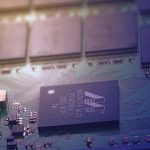A surge of investment and heightened interest in wireless connectivity is reshaping the Wi-Fi IoT chipset sector. With industries seeking more energy-efficient and reliable solutions, major players like Qualcomm and Broadcom hold significant market shares as the landscape adapts to new standards. As companies pivot back to upgrading enterprise networks and manufacturers move to address long-range applications, innovative Wi-Fi protocols are positioned to support everything from small, battery-operated gadgets to complex industrial systems. IoT Analytics predicts notable growth ahead, a sign that industry needs and technological advances are increasingly aligned. Recent field deployments and device innovations suggest that adoption rates could climb rapidly, impacting connected devices market-wide.
Earlier analyses from several years ago highlighted the dominance of traditional Wi-Fi standards and protocol limitations, particularly for low-power or long-range IoT use cases. At that time, alternative connectivity like LPWAN and proprietary methods often secured preference for remote monitoring and industrial automation. More recently, as Wi-Fi 6, Wi-Fi 6E, and Wi-Fi HaLow emerged, both the market size projection and the pattern of deployment have shifted, signaling quicker uptake and broader ecosystems. Device manufacturers and enterprises have accelerated their investment cycles in line with both the advancement and mass availability of new chipsets, reflecting changing priorities in connectivity reliability, speed, and power consumption.
What Drives Wi-Fi IoT Chipset Growth?
Market forecasts indicate the Wi-Fi IoT chipset segment is on track to reach $4.84 billion by 2030, recovering from a recent slump attributed to an oversupply of basic chipsets and a sluggish enterprise upgrade cycle. Improved energy efficiency in recent wireless standards such as Wi-Fi 6 and targeted innovations for IoT devices have contributed to increased market optimism. The adoption of low-power chipsets enables a wider range of battery-operated applications, expanding Wi-Fi’s presence beyond traditional uses.
How Are New Wi-Fi Standards Impacting Enterprises?
Enterprise spending on IoT infrastructure witnessed a pause between 2023 and 2024, but research suggests a renewed momentum in 2025 as organizations move to replace legacy systems. Updated platforms, including Wi-Fi 6E, which leverages the 6 GHz spectrum, and Wi-Fi 7, designed to allow multi-band operations, are expected to lower interference and boost performance. This cycle of upgrades introduces further demand for advanced chipsets suitable for diverse and intensive applications.
Wi-Fi HaLow: Meeting Long-Range IoT Needs?
Wi-Fi HaLow, using sub-GHz frequencies, offers extended range and enhanced obstacle penetration suited to industrial and agricultural deployments. Commercial rollout began in 2024, with projections for widespread adoption over the next few years. The new protocol supports both IP and video transmission, positioning it as an alternative where longer distances or challenging environments are in play.
“Wi-Fi is expanding into new segments of IoT, with low-power Wi-Fi and Wi-Fi HaLow addressing the power and range limitations that previously favoured other protocols,” noted Satyajit Sinha, Principal Analyst at IoT Analytics.
Mike Danil, CEO at Morse Micro, shared: “In the next four to five years, it is expected that Wi-Fi HaLow will sell close to 100 million devices in the field, and it’s accelerating in the USA and slowly starting in Europe as well.”
The trajectory for Wi-Fi IoT chipsets depends on ongoing adoption by enterprises and rapid commercial deployment of standards like Wi-Fi 6, 7, and HaLow. Buyers and developers will benefit from monitoring chipset roadmaps for power-savings enhancements, compatibility updates, and security features. By integrating new Wi-Fi standards, users can expand IoT solutions with improved energy efficiency and coverage, while device manufacturers can differentiate products in a crowded market. Continuous evaluation of ecosystem readiness and potential interoperability challenges remains essential for sustainable market participation and to ensure optimal device performance as new deployments scale.










